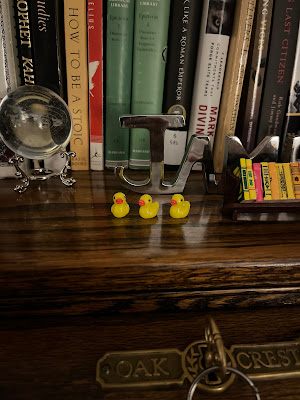
Eric Siblin’s book “The Cello Suites: J. S. Bach, Pablo Casals, and the Search for a Baroque Masterpiece” set me free.
Siblin composes a history of Bach’s six Cello Suites that does not merely impart information, but cultivates a deep(er) appreciation for The Master and his masterwork that was nearly lost. Taking his cue from Bach, Siblin divides his book into six chapters (one for each movement) with their respective preludes, allemandes, courantes, sarabandes, minuets, bourees or gavottes and concluding gigues. He explains how, “Bach will occupy the first two or three movements of each suite. The dances that come afterward or earmarked for Pablo Casals. And the gigues that close each suite will be reserved for a more recent story . . . “ (p. 9)
While this framework helps the reader capture the mood of each suite, the writer also (perhaps unwittingly) delivers history in a manner that helps the non-cellist grasp the experience of actually playing. The Chord, utilized by Bach throughout the Suites is a stack of three or more notes that a pianist or guitarist would strike all at once. This is an impossible feat on the cello, so one must bow one or two lower strings and pivot up to the rest of the notes to complete chord (listen to the opening notes of Suite 1, No. 4 Sarabande for a sample). Siblin in this way performs the history, introducing a particular theme regarding Bach and Casals then while these “notes” reverberate in the mind of the reader, shares a present-day experience that closes the harmony in a way that compliments the tones Bach composed.
One notable feature of the writer’s experience should come to light: he is not a cellist. This is notable because while a music critic, he actually relates taking cello lessons in order to better understand and communicate. This akin to crawling into a cannon to write about war. Bravo, Siblin!
A copy of the Suites has been in my possession (as any cellist must have) since high school. I’ve heard selections played in sundry settings: private living room concerts, practice halls, recordings, movie soundtracks and (how dare they?) commercials. Siblin manages to tune the ear to hear the Suites in surprising ways. Since reading this book I’ve listened to recordings by various artists and am smitten by what I’ve never heard before. I’ve never felt worthy enough to play, but Siblin pulls back the curtain and revealing secrets that have not only changed my mind, but have freed me to play.
I sought out one specific recording by Pablo Casals (dated 1954) that settled the matter. I can’t describe what I heard, but this for the first time in my life I played through the Prelude to Suite 1 three times, played Suite 1 No. 3 Courante twice, Suite 1 No. 4 Sarabande twice and the Prelude to Suite 3 once. I nearly cried. My life is not the same. The first time in years I’ve gone to sleep at night with the music lilting through my head—I can feel it on my fingertips.
Permit me to part from the “book review” and make some acknowledgments. The first to one very good friend who made this possible: “Thank you” Second, to my darling beautiful wife, who orchestrated the whole thing (you know what you did--I kiss you forever). Finally, to Elizabeth . . .
One need not be a cellist to enjoy Bach's Suites. One need not be a musician to enjoy Siblin’s book, but you have not lived until you’ve heard all Six Suites (and Wagner. You must see Wagner's “Die Tetralogie der Ring des Nibelungen” in its entirety--but's that another blog).
If you have heard the Suites, you perhaps would never hear them the same again after reading Siblin’s marvelous book.



